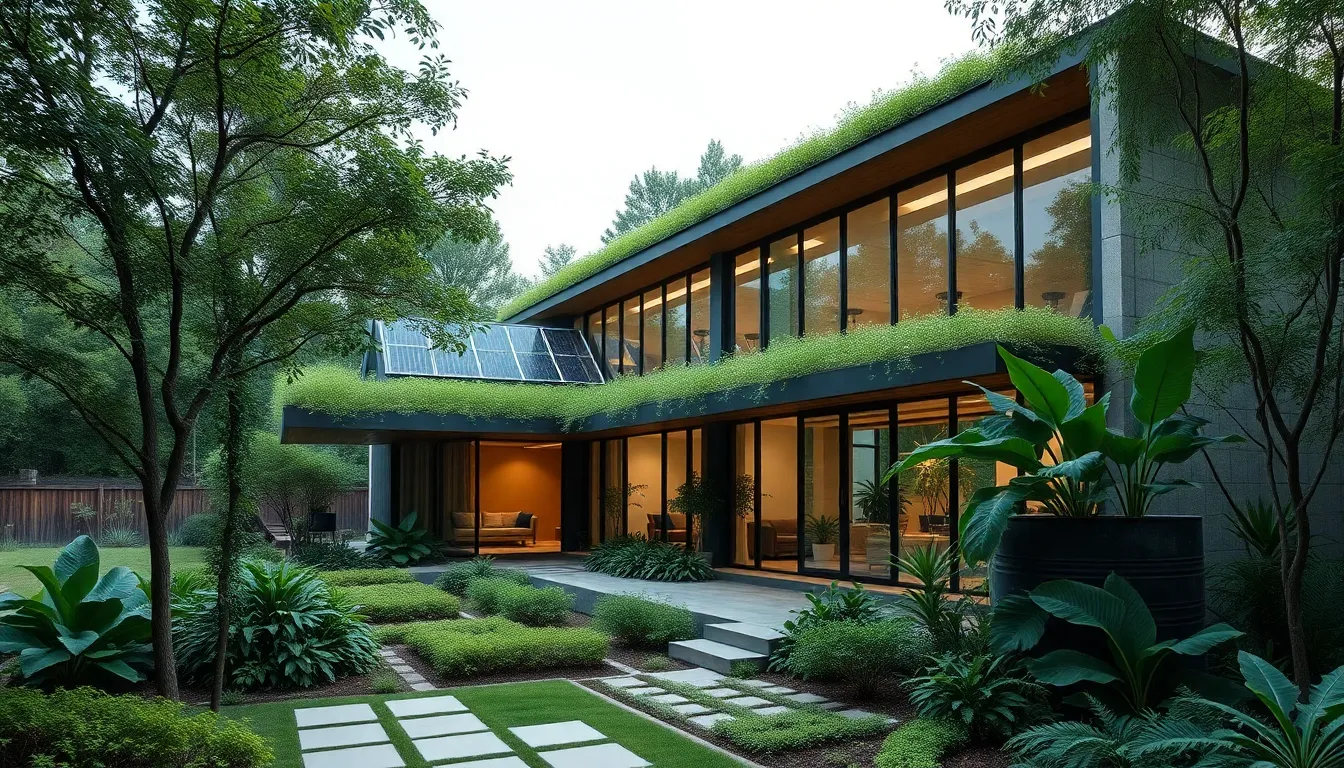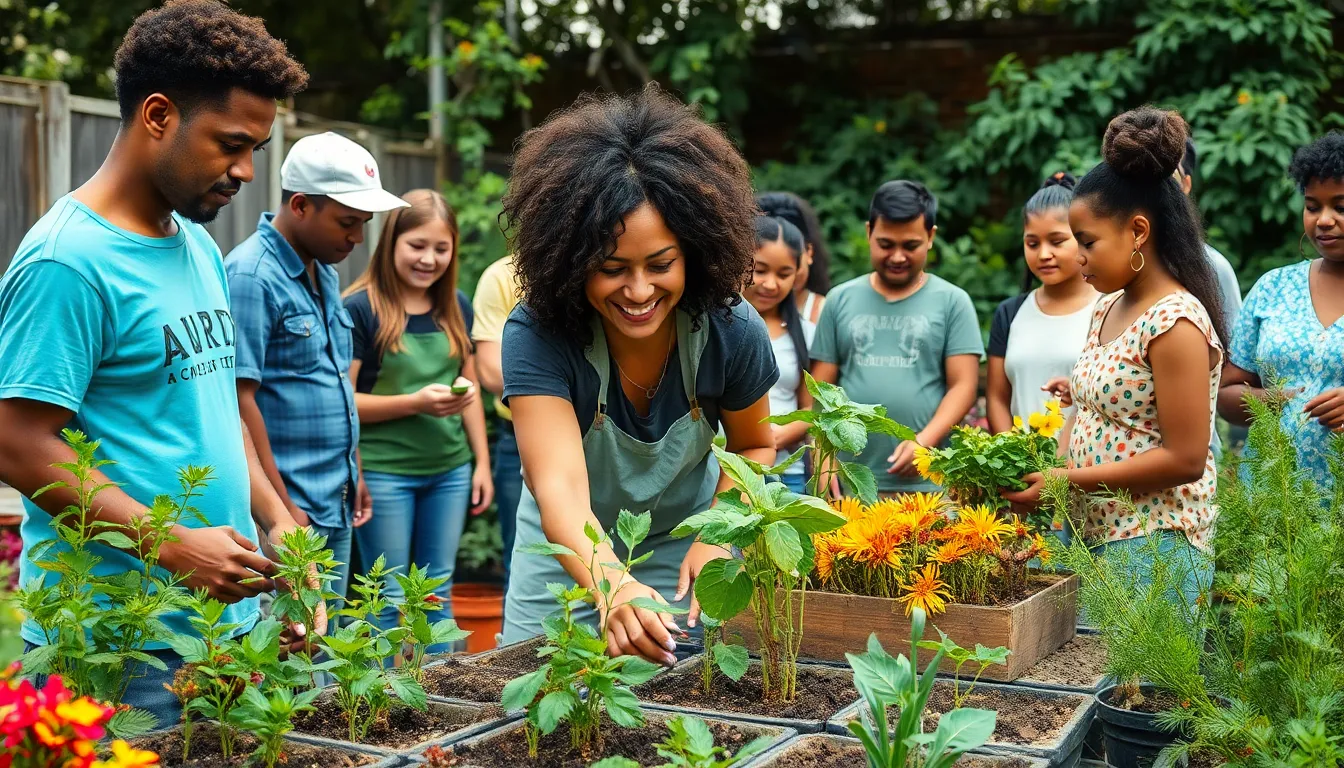Table of Contents
ToggleImagine a place where eco-friendly dreams come to life, and your guilty conscience takes a permanent vacation. Welcome to the sustainable living center, where reducing your carbon footprint is as easy as sipping organic herbal tea while hugging a tree. Here, sustainability isn’t just a buzzword; it’s a lifestyle that’s as chic as it is essential.
This center isn’t just about recycling and composting; it’s a vibrant hub for learning, creativity, and community. From workshops on urban gardening to classes on energy-efficient living, it’s all about making green choices fun and accessible. So whether you’re a seasoned eco-warrior or just starting your journey, this is the place to be. Dive in and discover how sustainable living can be both rewarding and entertaining. After all, saving the planet should come with a side of laughter, right?
Overview of Sustainable Living Centers
Sustainable living centers serve as vital hubs for promoting eco-friendly practices and expanding community awareness. These centers provide a wide array of programs that nurture a deeper understanding of sustainable living. Participants engage in workshops covering topics like urban gardening, composting, and energy efficiency. Each activity is designed to make green choices enjoyable and accessible.
Educational resources enhance the experience at sustainable living centers. These centers often feature libraries, tool sharing programs, and demonstrations that illustrate sustainable techniques. They encourage hands-on learning, allowing participants to apply what they learn directly in their communities.
Community involvement plays a critical role in the success of sustainable living centers. Many programs actively encourage collaboration and foster connections among individuals passionate about environmental stewardship. Regular events, like harvest festivals and planting days, create an opportunity for networking and sharing best practices.
Support for local businesses represents a key focus at these centers. They often partner with local vendors to showcase eco-friendly products and services. These collaborations help strengthen the local economy while promoting sustainable options within the community.
Diverse audiences benefit from the initiatives at sustainable living centers. Families, students, retirees, and individuals interested in sustainability all find value in these programs. As these centers continue to evolve, their influence on fostering a culture of sustainability will only grow.
Key Features of Sustainable Living Centers

Sustainable living centers incorporate various features that promote an eco-friendly lifestyle. Each aspect aims to create a harmonious balance between nature and community.
Eco-Friendly Design
Eco-friendly design prioritizes sustainability in every structure. Materials like reclaimed wood and recycled metal enhance durability while minimizing environmental footprints. Natural lighting plays a crucial role in reducing energy use, as strategically placed windows allow sunlight to fill spaces. Green roofs or living walls not only provide insulation but also support local biodiversity. Visitors often find spaces that seamlessly blend indoor and outdoor environments, creating tranquil atmospheres. Additionally, rainwater harvesting systems contribute to efficient water management, ensuring thoughtful resource use throughout the center.
Renewable Energy Utilization
Renewable energy utilization forms the backbone of sustainable living centers. Solar panels harness sunlight, providing clean electricity to power facilities. Wind turbines further complement energy sources, generating power from natural breezes. Geothermal systems leverage underground temperatures for heating and cooling without harmful emissions. Electric vehicle charging stations support the shift towards cleaner transportation options, aligning with eco-conscious practices. Many centers also educate visitors on these technologies, promoting awareness and adoption of renewable energy solutions in everyday life.
Community Engagement and Education
Sustainable living centers actively involve the community through engaging activities that educate and inspire. These centers provide platforms where individuals can learn essential eco-friendly practices and connect with others who share similar values.
Workshops and Events
Workshops play a crucial role in offering hands-on experiences that promote sustainable living. Topics range from urban gardening techniques to energy-efficient practices. Events like farm-to-table dinners showcase local produce, encouraging healthy eating habits. Seasonal festivals, such as harvest celebrations, unite community members to celebrate sustainability. Families, students, and retirees alike find opportunities to participate and share knowledge, creating a vibrant atmosphere of learning and collaboration.
Partnerships with Local Organizations
Local organizations play an integral role in enhancing the effectiveness of sustainable living centers. Collaborations with community gardens and environmental groups facilitate broader outreach and resource sharing. By partnering with schools, these centers foster educational programs tailored for students. Local businesses also contribute by offering eco-friendly products at events, expanding the center’s impact on sustainable choices. Such alliances strengthen community ties while promoting a collective effort toward more sustainable practices.
Benefits of Sustainable Living Centers
Sustainable living centers offer numerous advantages that support both individuals and communities. They create impactful changes in environmental practices and local economies.
Environmental Impact
Sustainable living centers significantly reduce carbon footprints through practical practices. They promote renewable energy use, integrating solar panels and wind turbines into their operations. Diverse workshops on composting and gardening encourage eco-friendly habits among community members. Educational programs provide knowledge on conservation techniques. Biodiversity thrives as green spaces flourish around these centers, enhancing local ecosystems. Visitors learn about sustainable practices and their importance firsthand. Engagement fosters a sense of shared responsibility toward the environment.
Economic Advantages
Sustainable living centers boost local economies by supporting eco-friendly businesses. They create job opportunities through various programs and initiatives. Partnerships with local vendors help highlight and sell sustainable products, driving community commerce. Educational resources attract visitors, generating revenue and promoting local spending. Increased awareness of sustainability leads to long-term benefits for neighborhood infrastructures. Events hosted at these centers draw individuals and families, promoting tourism and boosting local economies. Investing in sustainability creates a more resilient economic future for communities.
Challenges Faced by Sustainable Living Centers
Sustainable living centers encounter various challenges that can affect their operations and community impact.
Funding and Resources
Securing funding represents a primary challenge for many sustainable living centers. Grants often provide initial financial support, but ongoing funding can be inconsistent. Many centers rely on donations from community members and local businesses to sustain their initiatives. Inadequate resources limit program offerings, making it difficult to expand workshops or develop new projects. Staffing limitations can also hinder the ability to run events efficiently. Effective partnerships with local organizations increase resource access and streamline operations. By cultivating these relationships, centers can enhance their visibility and attract additional funding opportunities.
Community Acceptance
Community acceptance is crucial for the success of sustainable living centers. Some residents may resist changes associated with eco-friendly practices. Misunderstandings about sustainable living can create barriers to participation. Addressing these concerns through transparent communication fosters trust and encourages involvement. Engaging local stakeholders in decision-making processes empowers them and promotes a sense of ownership. Additionally, showcasing tangible benefits of sustainable practices can shift perceptions. By highlighting successful collaborations, centers can build stronger connections within the community and reinforce the importance of sustainability.
Sustainable living centers play a crucial role in fostering a culture of environmental stewardship. By offering engaging workshops and community events they make eco-friendly practices accessible to everyone. These centers not only educate but also inspire individuals to adopt sustainable habits that benefit both the environment and the local economy.
As they continue to evolve they face challenges that require community support and understanding. Through transparent communication and active involvement local residents can contribute to the success of these initiatives. Embracing sustainability is a shared journey and sustainable living centers are at the forefront, guiding communities toward a greener future.





